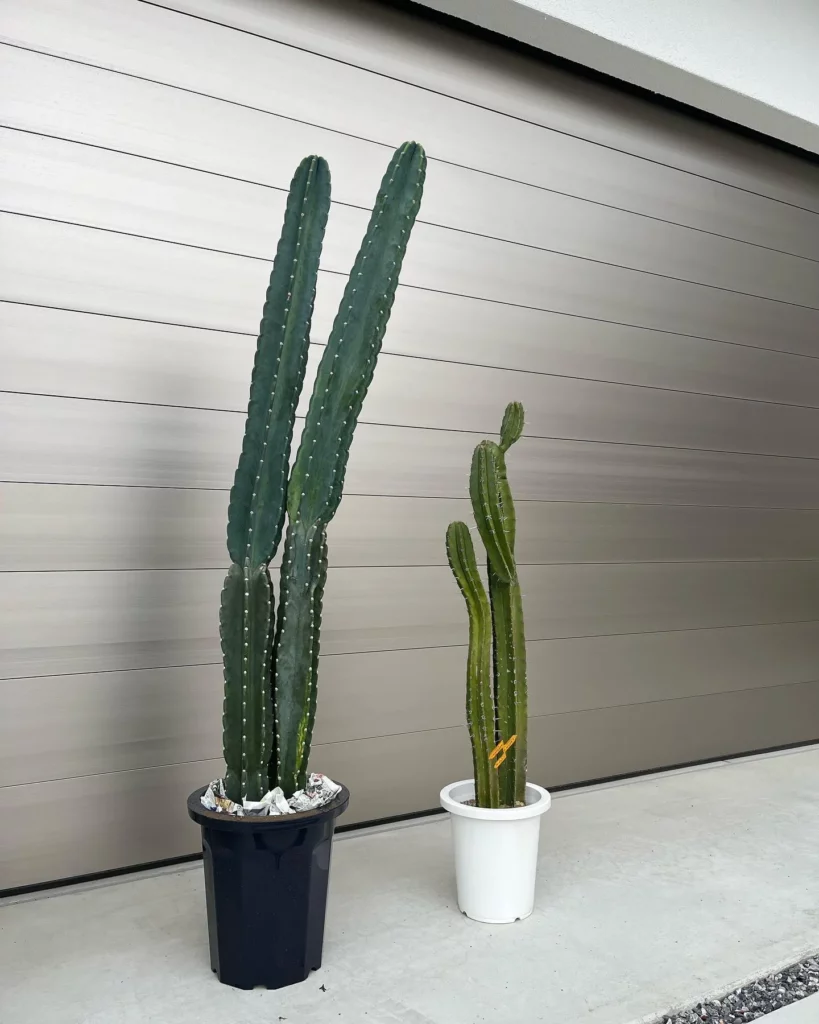Echinopsis subdenudata is a popular choice among cactus lovers due to its easy-care nature and stunning appearance. With its tiny spines, fuzzy areoles, and domino-like stem covered with small white dots, it adds a unique touch to any collection. Not to mention, its large, showy flowers in various colors are a sight to behold.
In this guide, you will learn about the specific care requirements for Echinopsis subdenudata, including its light preferences, watering needs, fertilizing tips, potting recommendations, propagation methods, and how to prevent and manage pests and diseases. By following these guidelines, you can ensure that your Easter lily cactus thrives and brings joy to your space.
Key Takeaways:
- Echinopsis subdenudata, also known as the Easter lily cactus, is an easy-to-care-for round cactus loved by beginners and experienced enthusiasts.
- Echinopsis subdenudata thrives in bright, direct sunlight, but protection from intense sun exposure is necessary.
- Water the cactus sparingly, allowing the soil to dry out completely between waterings.
Appearance of Echinopsis subdenudata
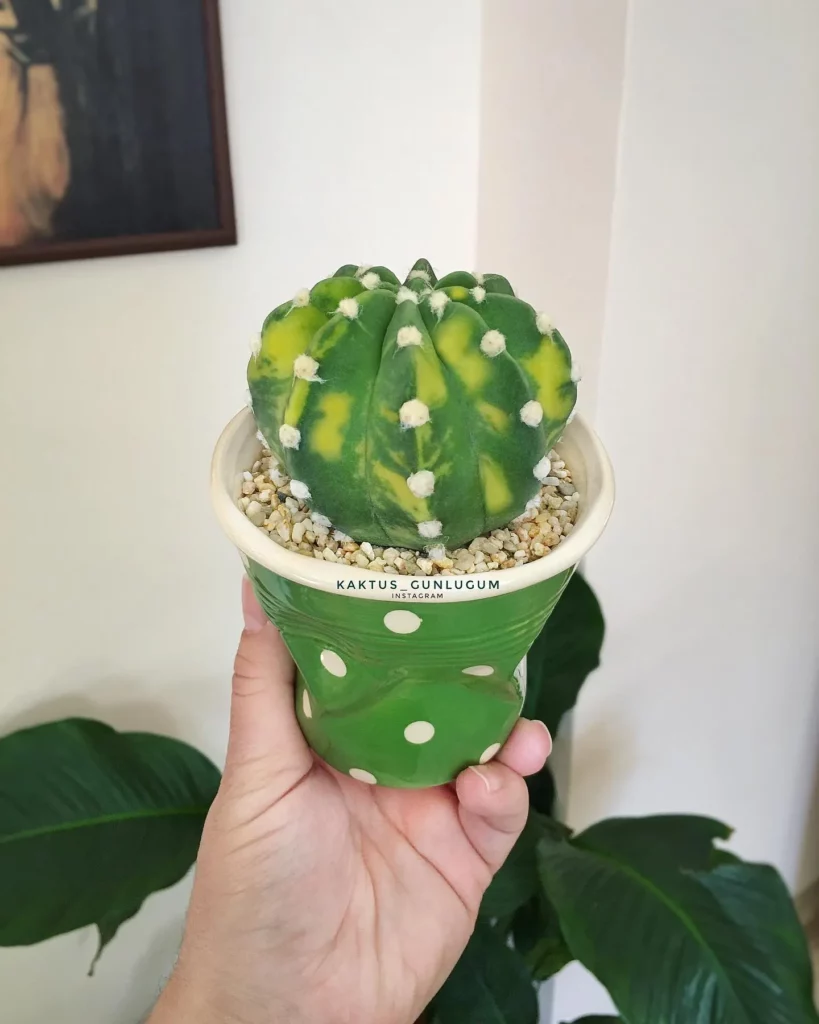
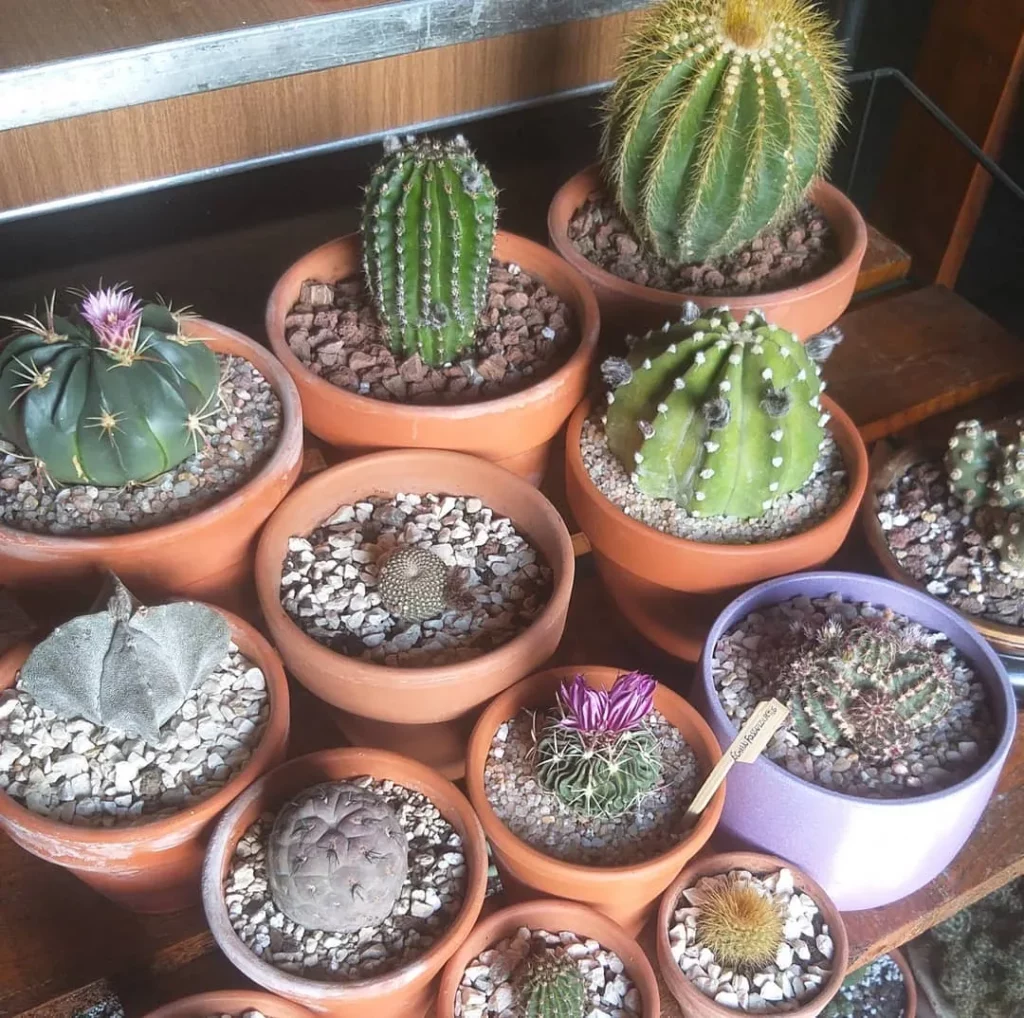
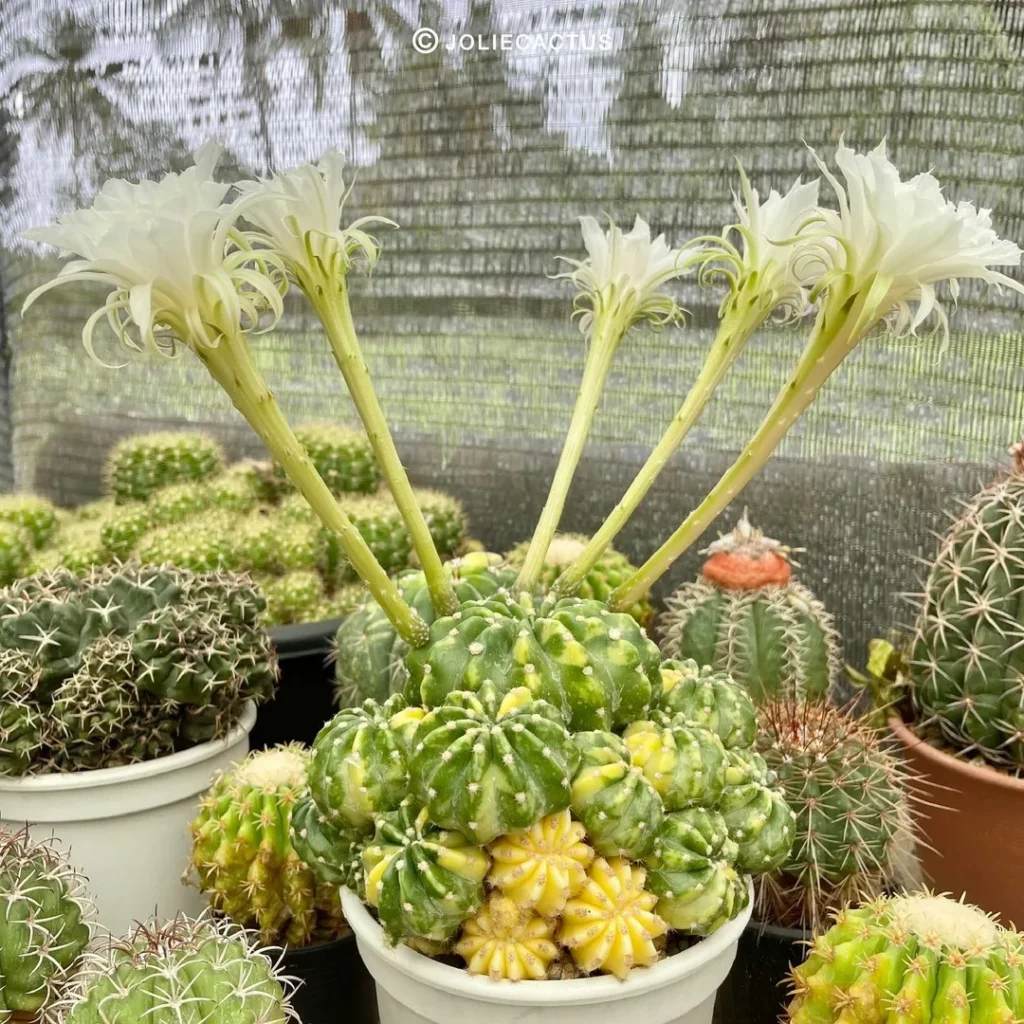
Echinopsis subdenudata, also known as the Easter lily cactus, is a round cactus with a distinct and charming appearance. Its green stem is adorned with tiny spines and fuzzy areoles, giving it a soft and textured look.
This cactus can reach a height of up to 6 inches and a width of 8 inches, making it a compact and delightful addition to any succulent collection.
What sets Echinopsis subdenudata apart is its stunning flowers, which is why it is called the Easter lily cactus. The plant produces large, showy blooms in a range of colors, including white, pink, red, orange, and yellow. These vibrant flowers add a burst of color to the plant and typically bloom in the summer. Although each flower lasts only a day or two, the cactus can produce multiple blooms throughout the flowering season, creating a beautiful display.
Furthermore, the stem of Echinopsis subdenudata is covered with small white dots, giving it a unique “domino” appearance. These dots create an interesting pattern and add to the visual appeal of the plant. Overall, the Easter lily cactus is a delightful and visually striking round cactus with fuzzy areoles and an array of colorful flowers, making it a favorite among cactus enthusiasts.
Light Requirements for Echinopsis subdenudata
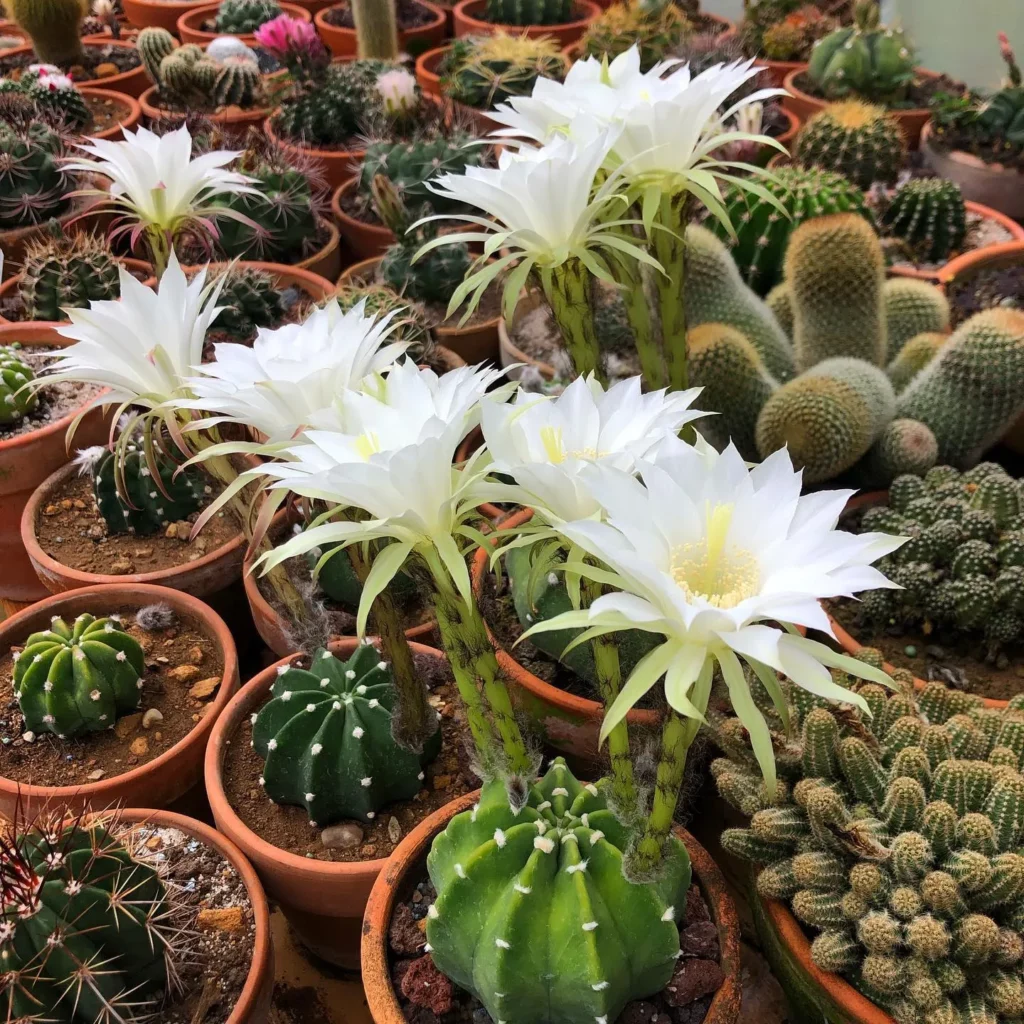
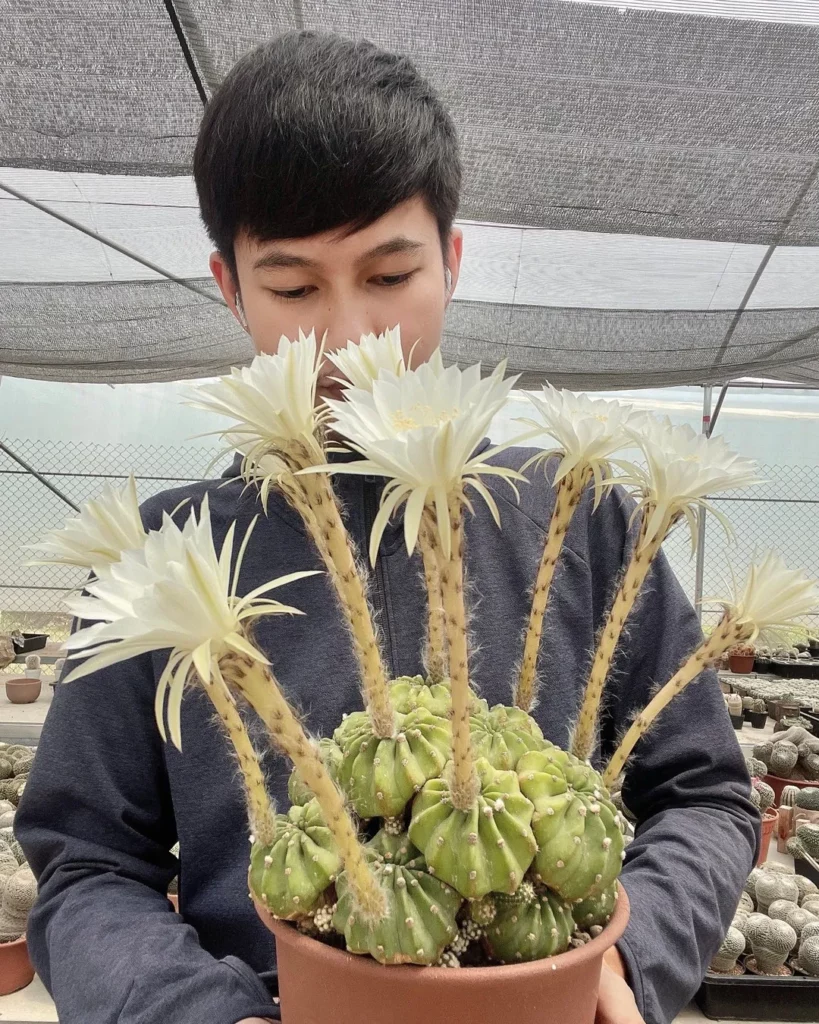
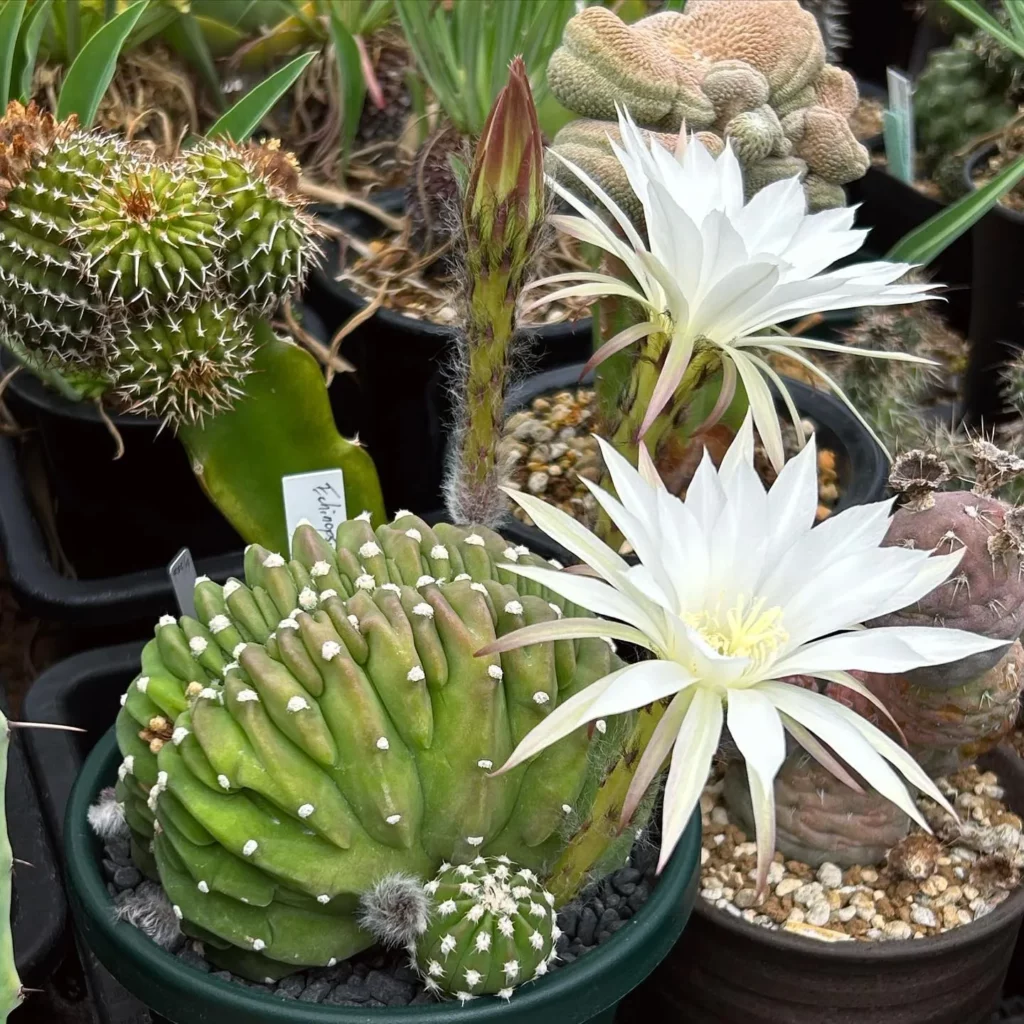
When it comes to the light requirements for Echinopsis subdenudata, direct sunlight is essential. This sun-loving cactus thrives in bright, direct sunlight, which helps support its healthy growth and vibrant appearance.
During the summer, it is best to place the cactus in the sunniest spot possible, mimicking its natural habitat. However, it’s important to be cautious of intense, unfiltered sunlight, especially in hot weather, as it can lead to sunburn.
To provide the ideal light conditions, I recommend offering some protection from the midday sun during the growing season. In arid and hot climates, it’s advisable to provide afternoon shade. If you’re growing Echinopsis subdenudata indoors, choose a spot near a window that receives morning or late afternoon sun. This will ensure the cactus gets the light it needs while avoiding the risk of overheating or sunburn.
Watering Echinopsis subdenudata
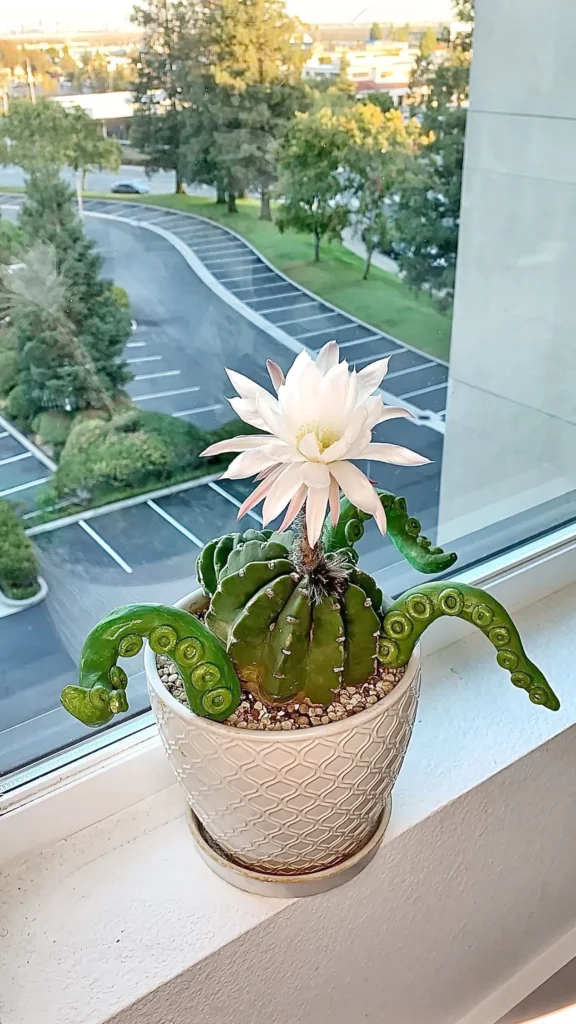
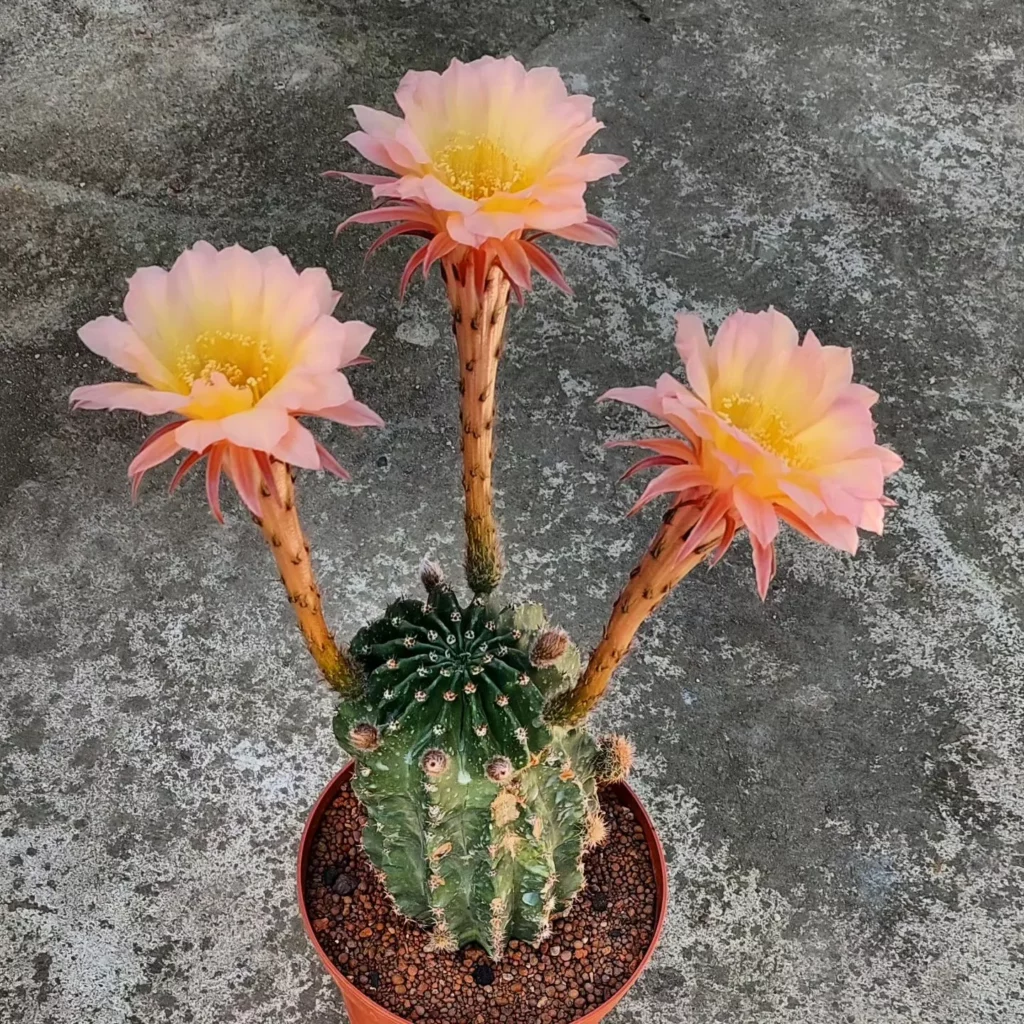
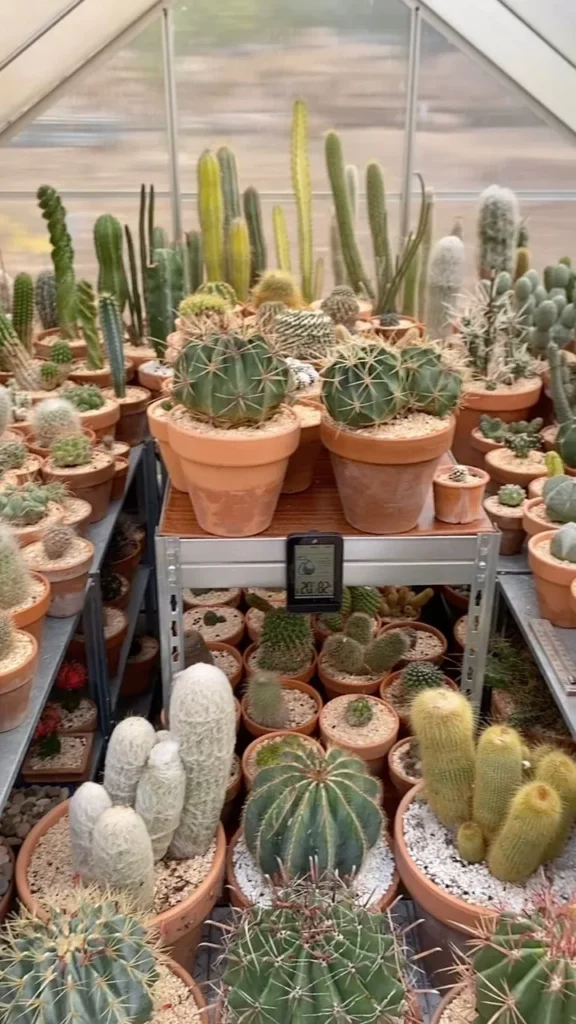
Proper watering is essential for the health and well-being of your Echinopsis subdenudata. It’s important to follow a watering schedule that allows the soil to dry out completely between waterings. This cactus is native to arid regions and is adapted to survive periods of drought, so overwatering can be detrimental to its health.
The frequency of watering will depend on various factors such as the climate, season, and potting mix. During the summer growing season, you may need to water your Echinopsis subdenudata once a week or every other week, but always check the moisture level of the soil before watering. Use your finger or a moisture meter to determine if the soil has dried out completely.
When it’s time to water, thoroughly drench the soil until water drains out of the bottom of the pot. This helps flush out any accumulated salts and ensures that the roots receive sufficient moisture. Remember to always use well-draining soil to prevent water accumulation and potential root and stem rot. A mixture of potting soil, perlite, and coarse sand works well, providing good airflow and drainage.
Signs of under-watering and overwatering
Keeping an eye on your Echinopsis subdenudata is crucial to determine if it’s receiving the right amount of water. Signs of under-watering include shriveled or wrinkled stems, dry and brittle spines, and slow growth. On the other hand, overwatering can lead to root rot, yellowing or mushy stems, and a foul smell. Adjust your watering schedule accordingly to maintain a balance and ensure the plant’s optimal health.
Fertilizing Echinopsis subdenudata
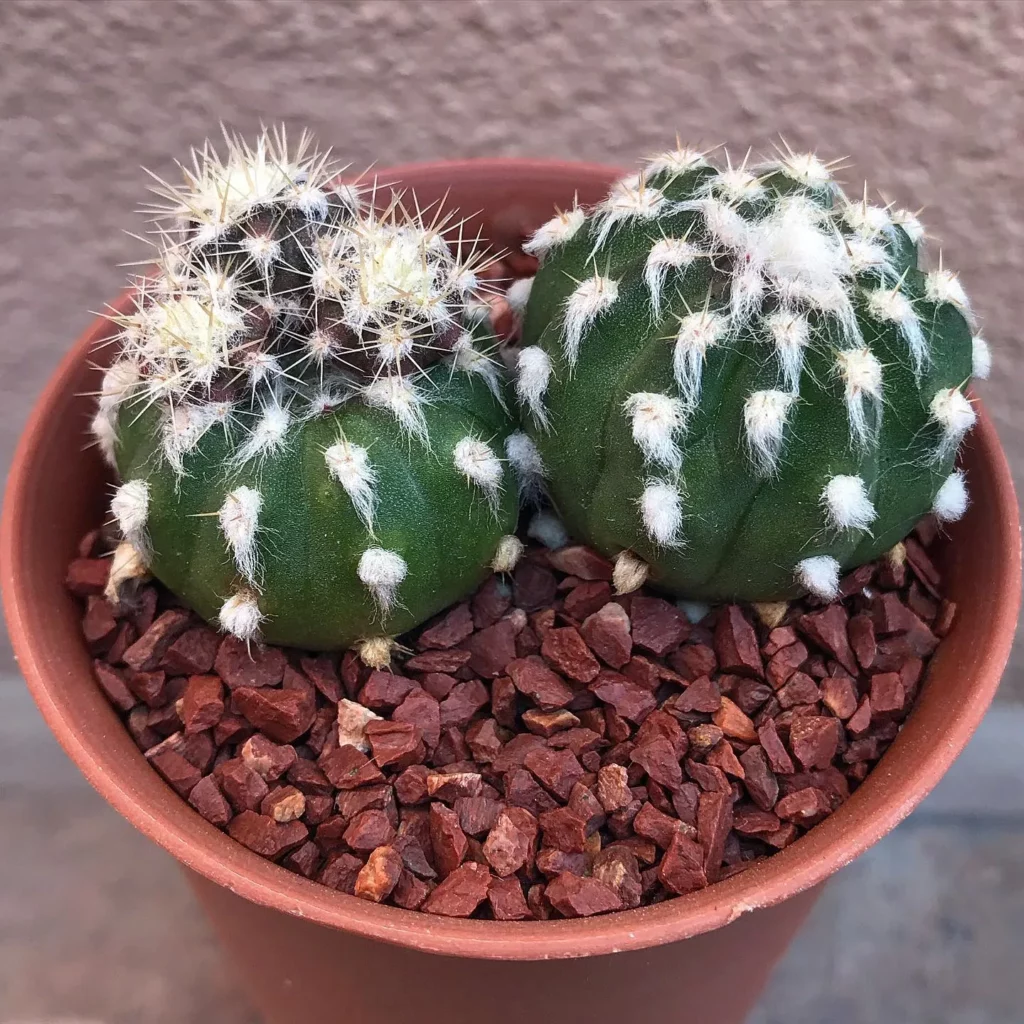
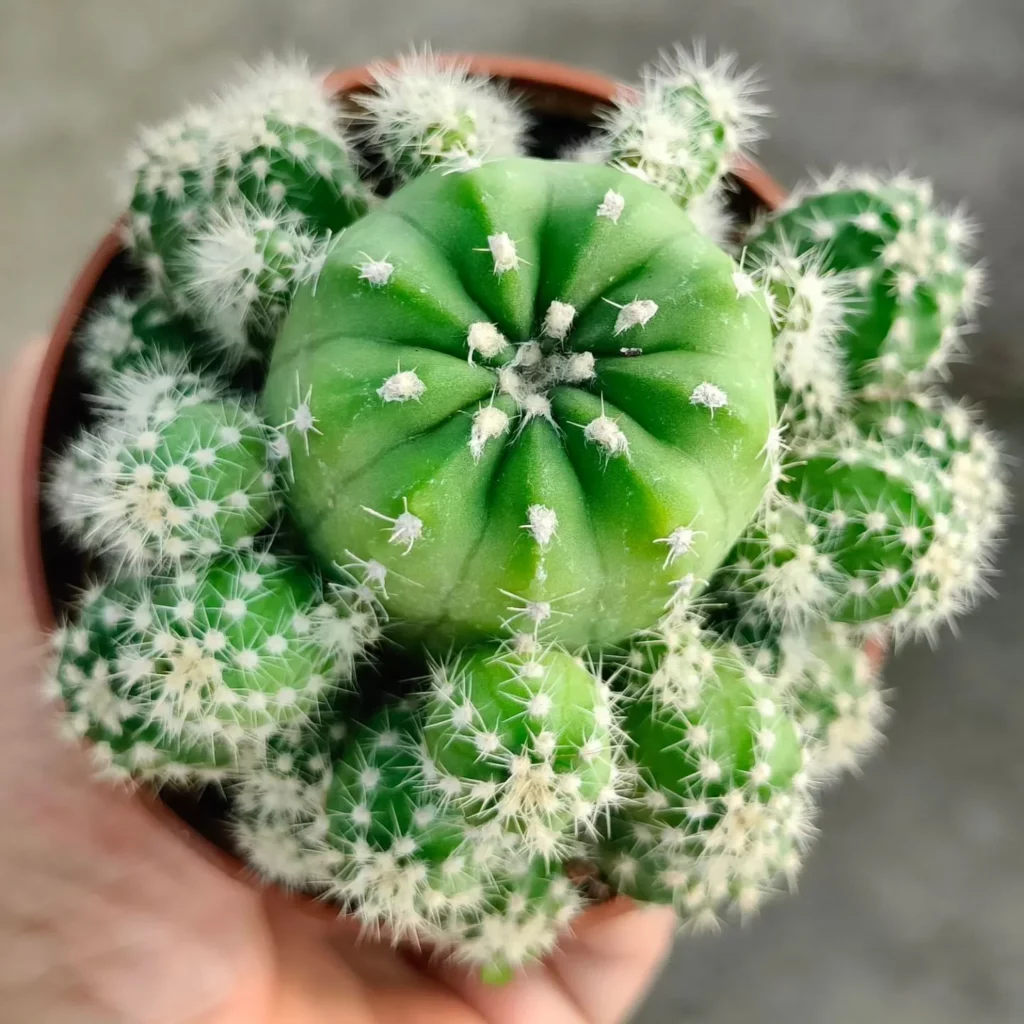
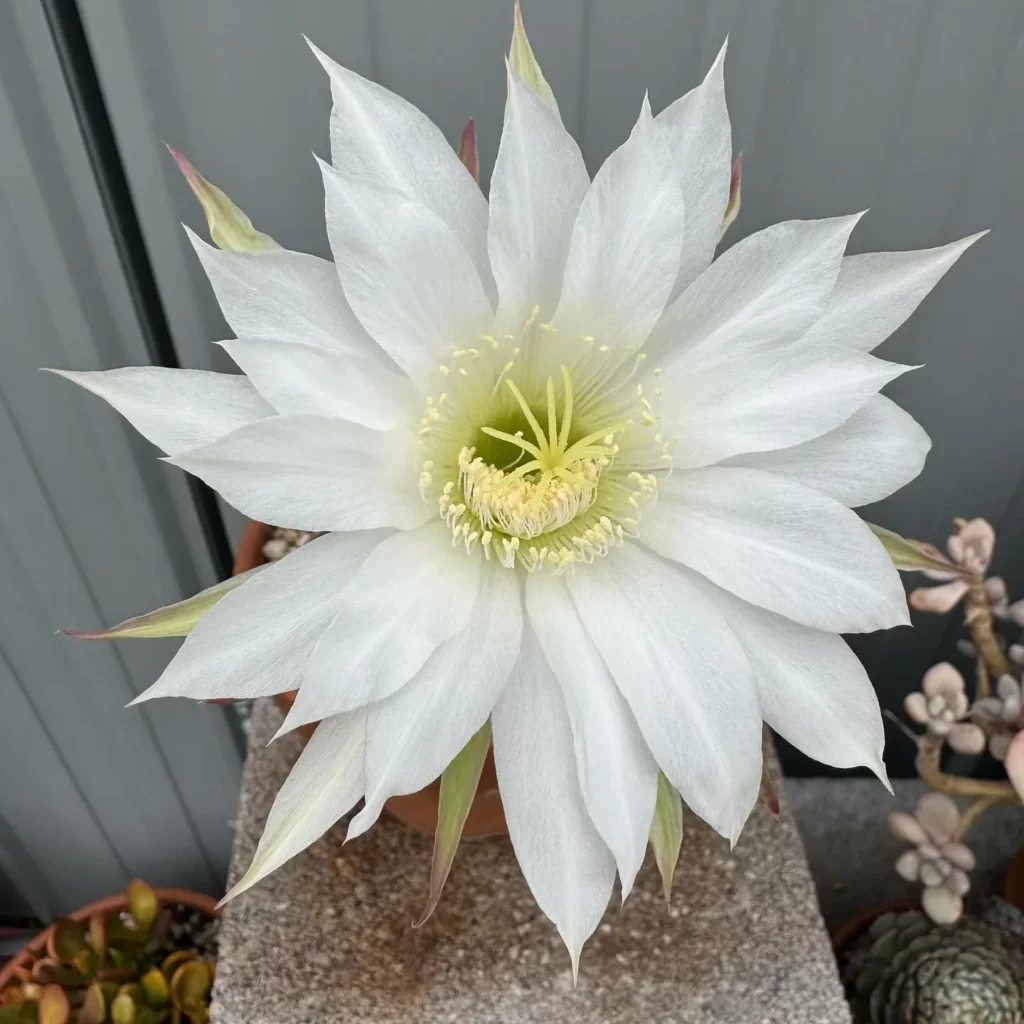
Proper fertilization plays a crucial role in the overall health and growth of Echinopsis subdenudata. As a cactus enthusiast, I have found that using a balanced cactus fertilizer is the best approach for ensuring optimal plant nutrition. Look for a water-soluble fertilizer with a similar NPK ratio, such as 10-10-10. This balanced formulation provides essential nutrients that promote healthy foliage and vibrant blooms.
When fertilizing Echinopsis subdenudata, I dilute the fertilizer to half its recommended strength and apply it once a month during the growing season. This ensures that the plant receives a steady supply of nutrients without the risk of overfertilization. Remember to avoid fertilizing the cactus during its dormant period, as it does not require as much nutrition during this time.
In addition to regular fertilization, it’s important to maintain a consistent watering schedule. Before applying fertilizer, allow the soil to dry out completely between waterings. This prevents the risk of nutrient buildup and promotes healthy root growth.
Key Points:
- Use a balanced cactus fertilizer with a similar NPK ratio, such as 10-10-10.
- Dilute the fertilizer to half its recommended strength and apply once a month during the growing season.
- Allow the soil to dry out completely between waterings to prevent nutrient buildup.
- Avoid fertilizing Echinopsis subdenudata during its dormant period.
Potting Echinopsis subdenudata
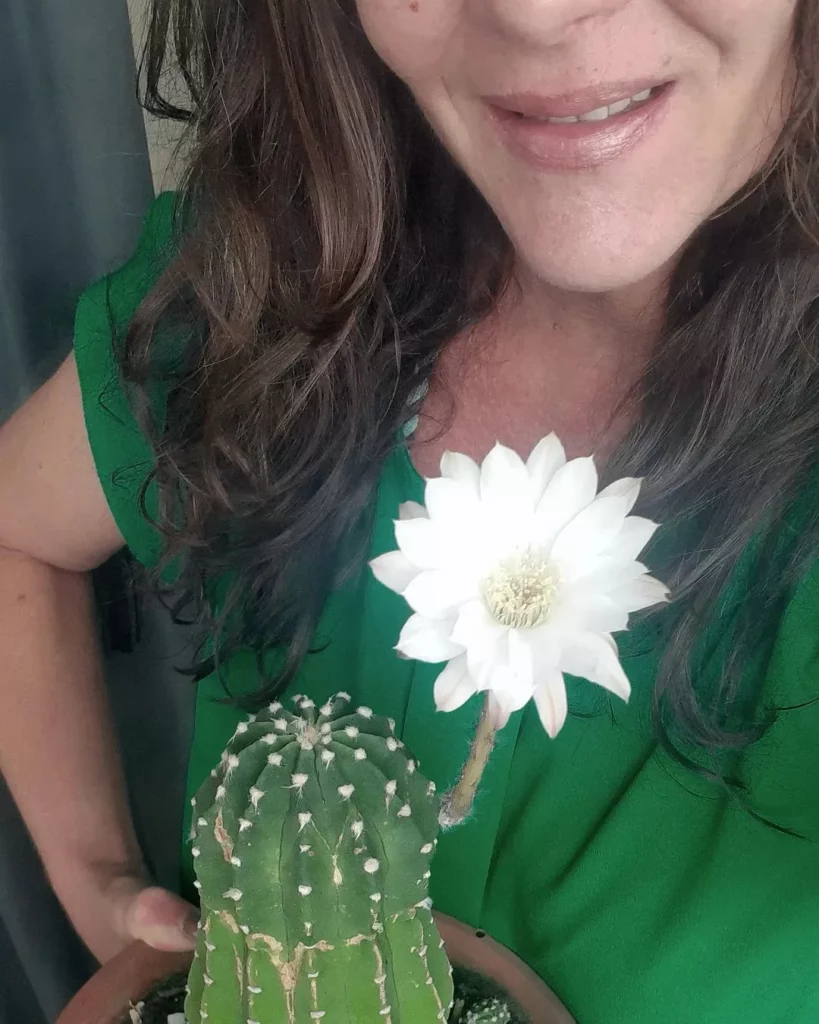
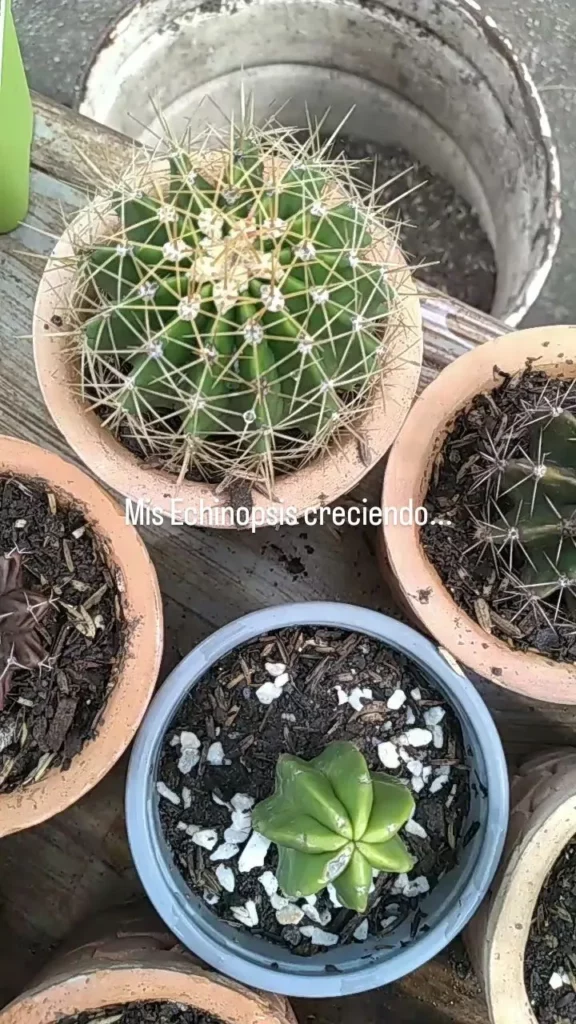
Proper potting is essential for the health and success of Echinopsis subdenudata, also known as the Easter lily cactus. The cactus should be planted in a pot with adequate drainage holes to prevent water accumulation and potential root and stem rot. Terracotta pots are highly recommended for Echinopsis subdenudata as they allow for water evaporation through their porous sides, promoting healthy root growth.
To ensure optimal drainage, it is important to use a well-draining soil mixture when potting Echinopsis subdenudata. A blend of potting soil, perlite, and coarse sand works well, with at least 50-60% grit for optimal water flow. This airy mixture allows excess water to escape quickly and prevents the soil from becoming waterlogged, which can be detrimental to the cactus’s health.
When potting Echinopsis subdenudata, choose a pot that is appropriate for the size of the plant, leaving enough room for growth and expansion. The pot should have drainage holes to allow excess water to escape during watering. Providing proper potting conditions will help create a favorable environment for the cactus, ensuring its overall well-being and longevity.
Echinopsis Subdenudata Propagation: Offsets, Pups, and Cuttings
One of the fascinating aspects of growing Echinopsis Subdenudata, also known as the Easter lily cactus, is the opportunity to propagate new plants. There are several methods you can use to propagate this cactus, including offsets, pups, and cuttings.
Offsets are small, baby plants that develop around the base of the parent plant. Once they reach about one-third the size of the parent plant, you can carefully remove them using a clean, sharp knife. Allow the offsets to callus for a few days, then plant them in a well-draining cactus mix. Water sparingly until they take root, which usually takes a few weeks.
Pups are another term for offsets and can be propagated in the same way using the steps mentioned above. This method allows you to create new plants that are genetically identical to the parent plant.
If you don’t have access to offsets or pups, you can also propagate Echinopsis Subdenudata using cuttings. Take a cutting from a healthy stem, ensuring it has a length of at least a few inches. Let the cutting callus for a few days, then plant it in a well-draining cactus mix. Water sparingly until it develops roots, which typically takes a few weeks.
Tips for Successful Propagation
- Use a well-draining cactus mix to prevent water accumulation and potential rot.
- Ensure the parent plant is healthy and free from pests or diseases before propagating.
- Give the offsets, pups, or cuttings proper time to callus before planting them.
- Water the propagated plants sparingly until they establish roots to avoid rotting.
- Provide ideal growing conditions, such as bright, indirect light, and appropriate watering habits.
Growth and Development of Echinopsis subdenudata
Echinopsis subdenudata is a cactus that exhibits relatively fast growth and development under optimal conditions. With proper care, this cactus can reach a height of up to 6 inches and a width of 8 inches. Its growth is influenced by factors such as adequate sunlight, proper watering, well-draining soil, and regular fertilization.
One of the most exciting aspects of Echinopsis subdenudata’s growth is its ability to produce multiple blooms throughout the summer season. These large, showy flowers come in various colors, including white, pink, red, orange, and yellow. While each flower only lasts for a day or two, the plant can produce a succession of blooms, creating a beautiful display.
To ensure optimal growth and development, provide the cactus with ample bright, indirect sunlight. Avoid exposing it to intense sun exposure, especially during hot weather, as this can lead to sunburn. Additionally, water the plant sparingly, allowing the soil to dry out completely between waterings, and use a well-draining soil mixture to prevent water accumulation and potential root and stem rot. Regular fertilization during the growing season with a balanced cactus fertilizer will also support healthy growth and encourage blooming.
Pests and Diseases of Echinopsis subdenudata
Echinopsis subdenudata is generally a resilient plant, but it is still susceptible to a few pests and diseases. It’s important to be aware of these potential issues to ensure the health and vitality of your cactus.
Pests:
- Mealybugs: These pests are small, white insects that form cottony clusters on the cactus. They can cause damage by feeding on the plant’s sap. If you notice mealybugs, remove them manually or use an organic insecticidal soap to control the infestation.
- Scale: Scale insects are small, flat insects that attach themselves to the cactus and suck out its juices. You can remove them physically or use insecticidal sprays or horticultural oils to control the population.
- Aphids: Aphids are tiny, pear-shaped insects that feed on the plant’s sap. They can be removed by spraying the cactus with a strong stream of water or by using insecticidal soap.
Diseases:
- Root Rot: Root rot is caused by overwatering or poor drainage, leading to the roots becoming waterlogged and rotting. To prevent root rot, make sure the soil is well-draining and allow it to dry out completely between waterings.
- Stem Rot: Stem rot is also caused by excessive moisture and poor ventilation. It can lead to the wilting and decay of the cactus stem. To prevent stem rot, ensure proper airflow around the plant and avoid overwatering.
- Fungal Infections: Fungal infections can occur if the cactus is exposed to prolonged periods of high humidity or if water sits on the foliage for too long. To prevent fungal infections, avoid overhead watering and ensure good air circulation around the plant.
Where to Buy Echinopsis subdenudata
If you’re looking to add a beautiful Echinopsis subdenudata, or Easter lily cactus, to your collection, there are several places where you can find this popular cactus. Whether you prefer shopping locally or online, here are some great options to consider:
1. Cactus Stores and Nurseries
Local cactus stores and nurseries are excellent places to find Echinopsis subdenudata. These specialty shops often have a wide selection of cacti, including the Easter lily cactus. Visiting a cactus store or nursery allows you to see the plants in person, ask questions, and get expert advice on caring for your new cactus.
2. Online Shops
If you prefer the convenience of online shopping, there are many reputable online shops that offer Echinopsis subdenudata. Popular online plant retailers like Planet Desert, Leaf & Clay, Fairyblooms, Succulents Box, Etsy, Rojas Succulents, and The Next Gardener often have a variety of Echinopsis subdenudata available for purchase. These online shops typically provide detailed product descriptions and photos, making it easy to select the perfect plant for your collection.
3. Plant Expos and Cactus Shows
Attending plant expos, cactus shows, or succulent swap events in your area can be a great way to find unique and rare cacti, including Echinopsis subdenudata. These events bring together plant enthusiasts, growers, and sellers, offering a wide range of cacti and other succulents for sale. You can often find vendors specializing in Echinopsis subdenudata and get the chance to see a variety of plants before making a purchase.
Tips for Echinopsis subdenudata Care
Growing and caring for Echinopsis subdenudata, or the Easter lily cactus, can be a rewarding experience. To ensure the health and beauty of your plant, here are some tips to keep in mind:
- Provide your Echinopsis subdenudata with bright, indirect light. Protect it from intense sun exposure, especially during the hottest part of the day.
- Water your cactus sparingly and allow the soil to dry out completely between waterings. Overwatering can lead to root rot and other issues.
- Use a well-draining soil mixture with plenty of grit to ensure proper drainage. This will help prevent water accumulation and protect the roots from rotting.
- Fertilize your Echinopsis subdenudata with a balanced cactus fertilizer once a month during the growing season. This will provide the necessary nutrients for healthy growth.
- Inspect your plant regularly for any signs of pests or diseases, such as mealybugs or scale. If detected, take prompt action to prevent further damage.
When potting your Echinopsis subdenudata, choose a pot with drainage holes and consider using terracotta pots, as they allow for better water evaporation. Proper potting is essential to maintain the overall health of your plant.
Edible Fruit and Varieties of Echinopsis subdenudata
Did you know that the fruit of Echinopsis subdenudata is not only beautiful but also edible? In traditional South American cuisine, the small, red fruit is sometimes used as an ingredient. It has a delightful sweet flavor and a slightly crunchy texture, making it a unique addition to recipes. However, it is important to consume the fruit in moderation as it contains small amounts of toxic alkaloids.
Aside from its edible fruit, Echinopsis subdenudata also offers a range of fascinating varieties. Some cultivars have variegated or striped foliage, which adds a visually striking element to any succulent collection. While these unique specimens may be harder to find and more expensive, their beauty and distinct characteristics make them a worthwhile addition to a succulent garden.
FAQ
What is the appearance of Echinopsis subdenudata?
Echinopsis subdenudata is a round cactus with a green stem covered with tiny spines and fuzzy areoles. It can grow up to 6 inches tall and 8 inches wide. The plant produces large, showy flowers in various colors such as white, pink, red, orange, and yellow.
What are the light requirements for Echinopsis subdenudata?
Echinopsis subdenudata thrives in bright, direct sunlight. During the summer, it should be placed in the sunniest possible spot. However, intense, unfiltered sunlight can cause sunburn, so some protection from the midday sun is advised. If growing indoors, choose a spot near a window that receives morning or late afternoon sun.
How should I water Echinopsis subdenudata?
Echinopsis subdenudata should be watered regularly during the summer growing season, allowing the soil to dry out completely between waterings. The frequency of watering depends on the climate and conditions but is typically once a week or every other week. During the dormant period in winter, watering should be drastically reduced to once a month or less to prevent overwatering and potential rot.
What should I use to fertilize Echinopsis subdenudata?
Echinopsis subdenudata benefits from a balanced cactus fertilizer during the growing season. Fertilize the plant once a month with a diluted, water-soluble fertilizer that has a similar NPK ratio, such as 10-10-10. Avoid fertilizing the cactus during the dormant period.
How should I pot Echinopsis subdenudata?
Echinopsis subdenudata should be planted in a well-draining soil mixture in a pot with adequate drainage holes. A mixture of potting soil, perlite, and coarse sand works well, with at least 50-60% grit for optimal drainage. Terracotta pots are recommended for their porous sides, allowing for water evaporation. Proper potting is crucial to prevent water accumulation and potential root and stem rot.
How can I propagate Echinopsis subdenudata?
Echinopsis subdenudata can be propagated through offsets, also known as pups. Once the pups are about 1/3 the size of the parent plant, they can be removed and planted in well-draining cactus mix. Propagation can also be done through cuttings, but ensure they callus for a few days before planting. Using a similar soil mix to the mother plant is essential for successful root growth.
How does Echinopsis subdenudata grow and develop?
Echinopsis subdenudata is a relatively fast-growing cactus that can reach a height of up to 6 inches and a width of 8 inches. It can produce multiple blooms throughout the summer season. Optimal conditions, including adequate sunlight, proper watering, well-draining soil, and regular fertilization, contribute to its growth and development.
What pests and diseases should I watch out for with Echinopsis subdenudata?
Echinopsis subdenudata is generally a resilient plant with few major pests or diseases. However, overwatering and inadequate drainage can lead to root and stem rot. Regularly inspect the plant for signs of pests such as mealybugs or scale and treat them accordingly to keep the plant healthy.
Where can I buy Echinopsis subdenudata?
Echinopsis subdenudata can be found in local plant stores, garden centers, or cactus nurseries. If not available locally, there are numerous online shops and marketplaces where you can purchase the plant, such as Planet Desert, Leaf & Clay, Fairyblooms, Succulents Box, Etsy, Rojas Succulents, and The Next Gardener.
What are some tips for caring for Echinopsis subdenudata?
Some tips for successfully growing and caring for Echinopsis subdenudata include providing ample bright, indirect light, watering sparingly and allowing the soil to dry out completely between waterings, using a well-draining soil mixture in pots with adequate drainage, fertilizing once a month during the growing season with a balanced cactus fertilizer, monitoring for pests and diseases, and following proper potting and propagation techniques.
Is the fruit of Echinopsis subdenudata edible?
Yes, the fruit of Echinopsis subdenudata is edible and sometimes used in traditional South American cuisine. It has a sweet flavor and slightly crunchy texture. However, it should be consumed in moderation as it contains small amounts of toxic alkaloids. Additionally, there are various cultivars and varieties of Echinopsis subdenudata, some with variegated or striped foliage, which can add visual interest to a succulent collection.

